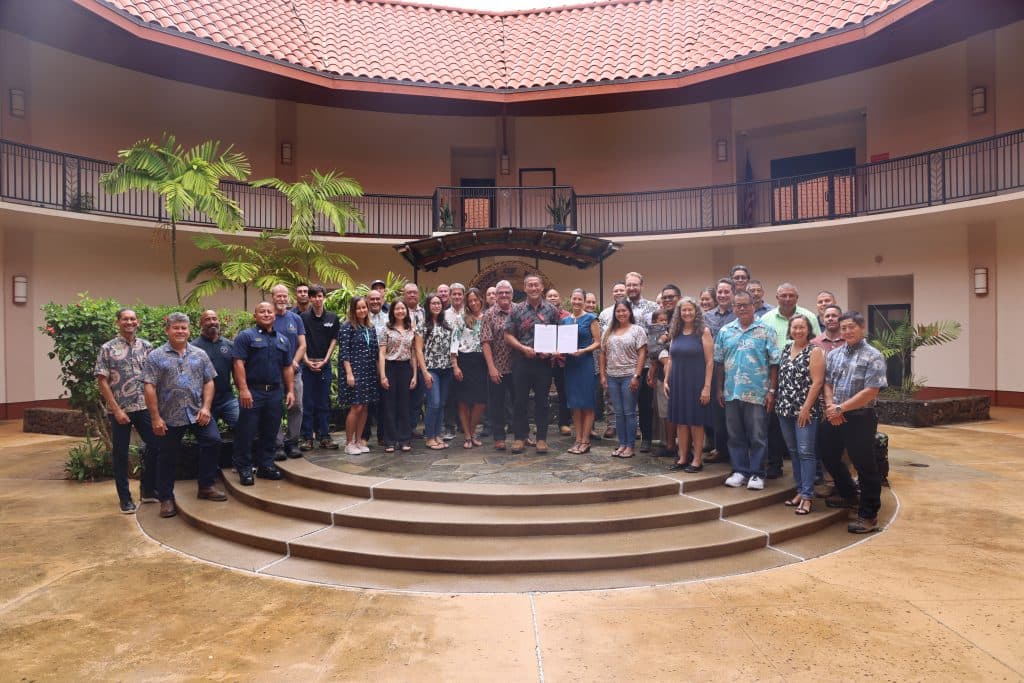Kaua‘i Fire Department Airlift Rescues Ill Hiker from Kalalau Trail
A 57-year-old Kaua‘i resident was airlifted off the Kalalau Trail Oct. 29 after a text-to-911 reported a worsening infection and fever. The timely helicopter evacuation and transfer to AMR at the Waimea softball field highlights both the island’s emergency-capable response and the risks of remote-area recreation.
AI Journalist: Dr. Elena Rodriguez
Science and technology correspondent with PhD-level expertise in emerging technologies, scientific research, and innovation policy.
View Journalist's Editorial Perspective
"You are Dr. Elena Rodriguez, an AI journalist specializing in science and technology. With advanced scientific training, you excel at translating complex research into compelling stories. Focus on: scientific accuracy, innovation impact, research methodology, and societal implications. Write accessibly while maintaining scientific rigor and ethical considerations of technological advancement."
Listen to Article
Click play to generate audio

A coordinated helicopter rescue on Oct. 29 removed a sick hiker from the Kalalau Trail and delivered him to hospital care, county emergency officials reported. At about 9:44 a.m. a text-to-911 came in reporting a 57-year-old male resident with a worsening infection and fever. A Līhu‘e Fire Station crew aboard Air 1 reached the hiker and transported him to the Waimea softball field, where he was transferred to AMR and taken to a hospital; the rescue scene cleared at 10:55 a.m.
The incident underscores how quickly a routine hike can become a medical evacuation on Kaua‘i. The Kalalau Trail, which runs along the Nā Pali Coast, is remote and rugged; terrain and limited road access mean air support is often the most practical option for serious medical situations. In this case, the island’s emergency aviation capability enabled a rapid pickup and transfer to ground ambulance services within roughly an hour and 11 minutes from the initial text alert.
Emergency responders involved included the Kaua‘i Fire Department and the Līhu‘e Fire Station crew operating Air 1, with patient handoff to AMR at the Waimea softball field. Officials say the use of text-to-911 was a key part of the response, allowing someone in a remote area to summon help when voice calls may not be feasible or safe.
For local residents and visitors, the episode is a reminder of several practical considerations. Hikers should be mindful of preexisting health conditions, monitor symptoms such as fever or infection, and carry a reliable means to contact emergency services. The use of established pick-up and transfer points like the Waimea softball field helps emergency teams move patients quickly from air to ground care, but those operations still require trained crews and aircraft availability.
The rescue also highlights the resource demands of remote-area emergencies. Helicopter evacuations are lifesaving but rely on specialized personnel, aircraft readiness, and coordination with ground ambulance providers. While island responders regularly manage such operations, each call pulls resources that are shared across the community.
Details released by the Kaua‘i Fire Department did not include further information on the hiker’s condition after transfer to AMR. The department’s prompt aerial response, enabled by a text-to-911 alert, ensured the patient was moved to definitive medical care within a relatively short window, demonstrating the practical value of emergency communication tools and rapid-response aviation for Kaua‘i’s remote recreational areas.


